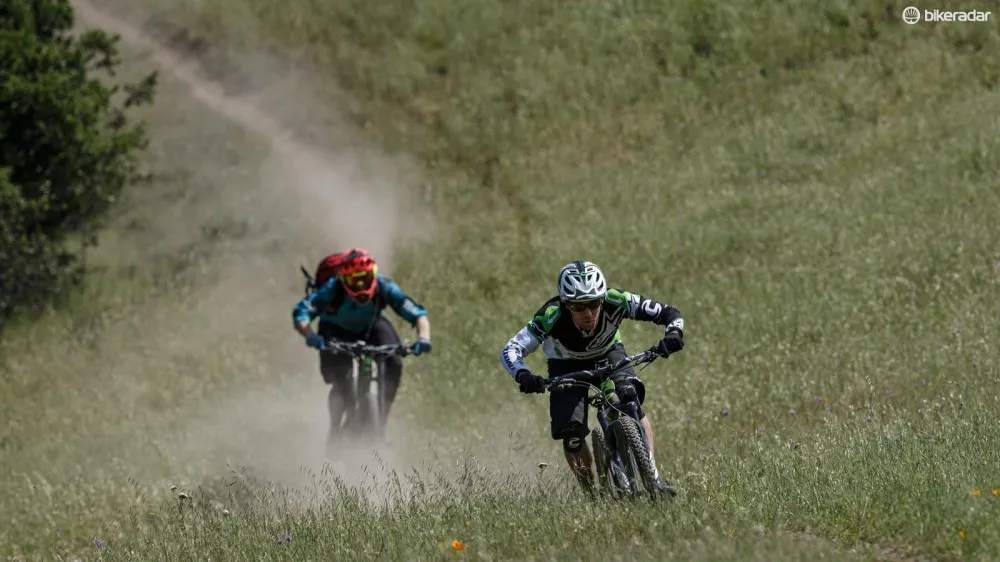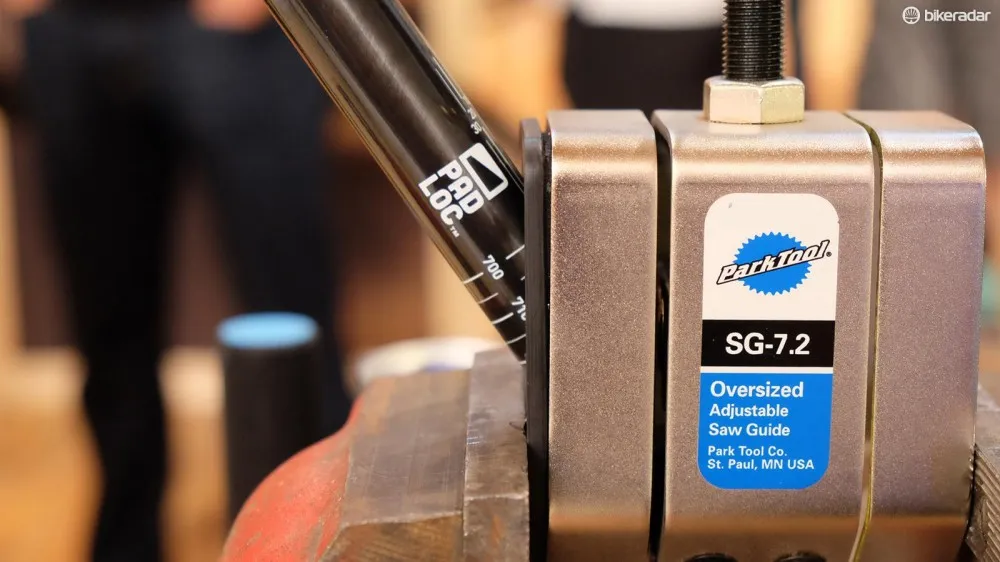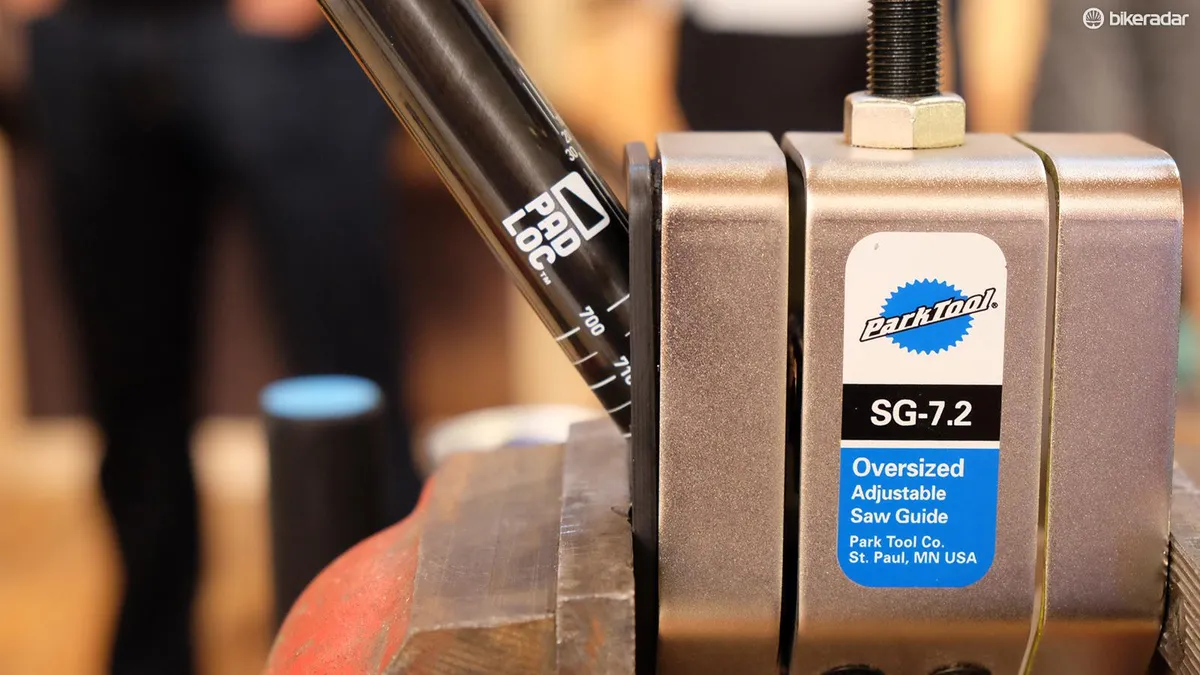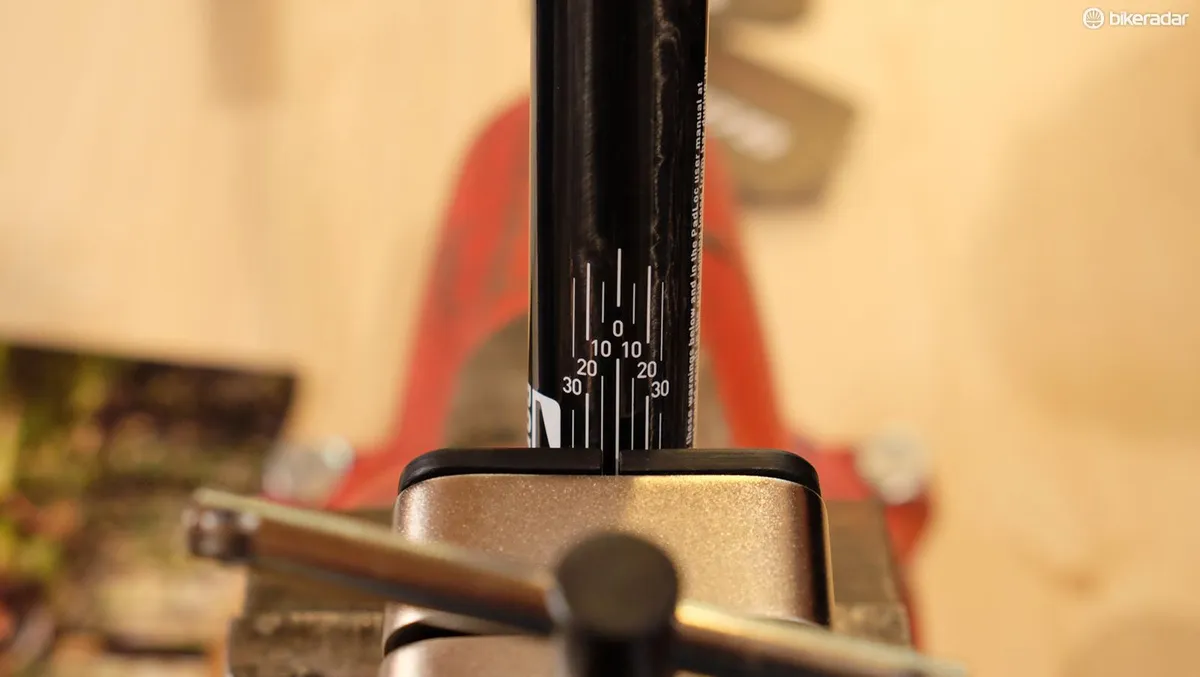It seems like every year another component or frame feature gets a makeover. Often for the better and sometimes for the worse, the cycling industry is hell bent on reinventing itself every chance it gets.
One mountain bike component that has remained steadfast through this tempest of change is the handlebar. Yes, we’ve changed clamp diameters from the spindly 25.4mm bars from days gone by to today’s 31.8 and bulbous 35mm diameters. And, yes, handlebar width is pushing ever outward as well.
What hasn’t changed is the actual shape of the handlebar. For many reasons, round just works.But if component manufacturer WTB has anything to say about it, that may shift too.
WTB recently rolled out a new grip and handlebar interface called PadLoc that could reconfigure handlebar design for the better.
What is it?
PadLoc is a pretty simple concept. It’s a pair of 30-degree miter cuts on the ends of a handlebar and a matching profile on the interior of the grips. This angled cut on the bar and corresponding wedge on the inside of the grip work together to prevent the grip from rotating.
What’s the point?
You may be asking, is this really necessary? The answer: It depends. Lock-on grips have become ubiquitous, save for the relatively small contingent of gram counters who opt for foam grips. The problem with lock-on grips is that clamping a circling around another circling and asking it to prevent rotation requires a very high degree of clamping force — enough that a ham-fisted mechanic could easily over tighten the grip, causing damage to the bar.
Technology born from tumbling through the dirt

Enduro racing is pushing the limits of many technologies, including lock-on grips
Last summer, while practicing for the Enduro World Series stop in Winter Park, Colorado, WTB OEM sales manager and Cannondale Overmountain Team rider Jason Moeschler experienced a grip rotation while landing a jump followed by a quick and graceless tumble through the dirt.
Upon regaining his senses, Moeschler set his mind to solving a problem than he and many other mountain bikers have encountered.
“If it happens, it is always at the worse possible moment, and usually causes you to totally lose control,” Moeschler said of grip rotation.
As more riders push the limits of trail bikes, grip rotation is becoming more of an issue.
“Think back to the Whistler EWS race last year. The tracks were so far beyond the capability of the bikes. So many riders were tightening their grips beyond max torque, and then you started seeing broken handlebars. Over-tightening grip clamps is not an acceptable solution,” Moeschler said.
By using a bar and grip designed with a wedge interface, the only thing the lock-on portion of the grip as to do is to prevent he grip from slipping off of the handlebar — a job that can be accomplished with much less clamping force.
Another claimed benefit of this new bar and grip interface is that there’s more room for rubber at the end of the grips. More rubber means more material for shock absorption, which WTB claims leads to more comfort.
“The difference between the metal clamp on a standard grip, and the deep rubber end of PadLoc is huge,” Moeschler said.
“PadLoc isn’t just for enduro. It is just as applicable to other rider groups: flat bar pavement, XC, DH, and moto. Any bike rider that uses a flat style handlebar, without exception, can feel the benefits of the PadLoc grip. Put those riders back on their regular grips, and the deal is done,” he added.
WTB-sponsored enduro racer Jerome Clementz, who also experienced a severe crash following grip rotation, was quick to see the benefits of this technology. RockShox was also open to the idea and is rolling out Clementz’ signature 750mm carbon handlebar along with the alloy 780mm BooBar with the PadLoc technology. WTB is in discussions with other handlebar manufacturers to develop PadLoc-specific handlebars.
PadLoc Particulars
One thing that riders should keep in mind is that using a PadLoc handlebar locks the user into running PadLoc grips. WTB has developed six PadLoc-specific grips in the pipeline, but putting traditional grips on a handlebar with PadLoc miters is by no means prudent. For one, there’s no rubber wedge at the end of the grip to prevent the end of the handlebar from puncturing the grip (or possibly, the rider.)

Riders can cut PadLoc profiles with Park Tool's PadLoc insert for its cutting guide
If you’ve also experienced unwanted throttle movements from your grips you don’t necessarily have to buy a new brand new handlebar. This fall, Park Tool is rolling out the SGI-7 insert for its SG-7.2 adjustable cutting guide that will allow anyone with a hacksaw and a vise to make the proper miter cut to their existing handlebar. According to WTB, future handlebars from a variety of manufacturers will come with hash marks to make cutting them to easier.
The shape of handlebars to come?
So will this become the new normal for all flat bars, as Moeschler claims? Time will tell, but as far as new mountain bike technologies go, this one promises improved comfort and safety, which is a welcome change from “lighter, stiffer, faster.”




